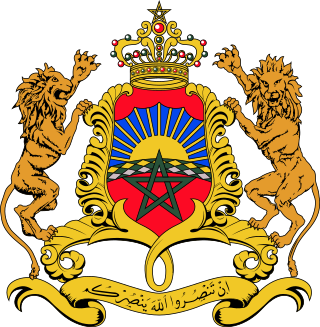
Morocco is a member of the United Nations and belongs to the African Union, Arab League, Arab Maghreb Union (UMA), Organisation of Islamic Cooperation (OIC), the Non-Aligned Movement and the Community of Sahel-Saharan States (CEN-SAD). Morocco's relationships vary greatly between African, Arab, United States, United Kingdom, Australia, and Western states. Morocco has had strong ties with the West in order to gain economic and political benefits. France and Spain remain the primary trade partners, as well as the primary creditors and foreign investors in Morocco. From the total foreign investments in Morocco, the European Union invests approximately 73.5%, whereas the Arab world invests only 19.3%. As of 2009, many countries from the Persian Gulf and Maghreb regions are also becoming more involved in large-scale development projects in Morocco.

The foreign relations of Canada are Canada's relations with other governments and nations. Canada is recognized as a middle power for its role in global affairs with a tendency to pursue multilateral and international solutions. Canada is known for its strong commitment to international peace and security, as well as being a mediator in conflicts, and for providing aid to developing countries. The "golden age of Canadian diplomacy" refers to a period in Canadian history, typically considered to be the mid-20th century, when Canada experienced a high level of success in its foreign relations and diplomatic efforts.

The diplomatic relations between Canada and the French Republic are friendly, the importance of which centres on the history of French immigration to Canada. Canadians of French heritage make up the majority of native speakers of French in Canada, who in turn account for about 22 percent of the country's total population. The small French Territorial Collectivity of Saint Pierre and Miquelon is situated off the coast of Atlantic Canada.

The Embassy of Canada in Washington, D.C. is Canada's main diplomatic mission to the United States. The embassy building designed by Arthur Erickson and opened in 1989 is located at 501 Pennsylvania Avenue Northwest, Washington, D.C., between the United States Capitol and the White House, just north of the National Gallery of Art. In addition to its diplomatic role, the embassy provides consular services for Delaware, Washington, D.C., Maryland, Virginia, and West Virginia. It also hosts a Trade Commissioner Service office responsible for the states of Maryland, Washington, D.C., Virginia, and West Virginia.

Canadian-Romanian relations are the bilateral relations between the governments of Canada and Romania. Canada has an embassy in Bucharest. Romania has an embassy in Ottawa and three consulates-general. Romania has also three honorary consulate general in Moncton, Québec and Calgary.

Canada–Lebanon relations refers to the diplomatic relations between Canada and Lebanon. Canada is home to one of the largest Lebanese diaspora communities. Both nations are members of the Organisation internationale de la Francophonie and the United Nations.

Canada-Swiss relations are foreign relations between Canada and Switzerland. Both countries are members of the Francophonie and the United Nations.

Canada and Greece first exchanged ambassadors in 1942. Both countries are members of the Organisation for Economic Co-operation and Development, Organisation internationale de la Francophonie, Organization for Security and Co-operation in Europe, NATO and the United Nations. There is a strong Greek community living in Canada.

Mexico–Senegal relations are the diplomatic relations between the United Mexican States and the Republic of Senegal. Both nations are members of the Group of 15 and the United Nations.

Canada and the Dominican Republic established bilateral relations in 1954. Both nations are members of the Organization of American States and the United Nations.











